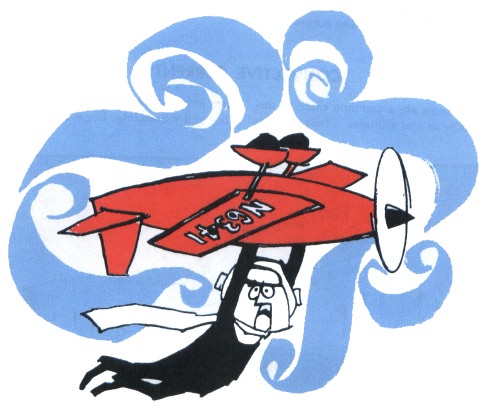Aviation Weather
full text of the classic FAA guide

Chapter 9
TURBULENCE
Everyone who flies encounters turbulence at some time or other. A turbulent atmosphere is one in which air currents vary greatly over short distances. These currents range from rather mild eddies to strong currents of relatively large dimensions. As an aircraft moves through these currents, it undergoes changing accelerations which jostle it from its smooth flight path. This jostling is turbulence. Turbulence ranges from bumpiness which can annoy crew and passengers to severe jolts which can structurally damage the aircraft or injure its passengers.
Aircraft reaction to turbulence varies with the difference in windspeed in adjacent currents, size of the aircraft, wing loading, airspeed, and aircraft attitude. When an aircraft travels rapidly from one current to another, it undergoes abrupt changes in acceleration. Obviously, if the aircraft moved more slowly, the changes in acceleration would be more gradual. The first rule in flying turbulence is to reduce airspeed. Your aircraft manual most likely lists recommended airspeed for penetrating turbulence.
Knowing where to expect turbulence helps a pilot avoid or minimize turbulence discomfort and hazards. The main causes of turbulence are (1) convective currents, (2) obstructions to wind flow, and (3) wind shear. Turbulence also occurs in the wake of moving aircraft whenever the airfoils exert lift—wake turbulence. Any combination of causes may occur at one time.
Table of Contents
Previous Section: Fronts and Flight Planning
Next Section: Convective Currents
A PDF version of this book is available here. You may be able to buy a printed copy of the book from amazon.com.
